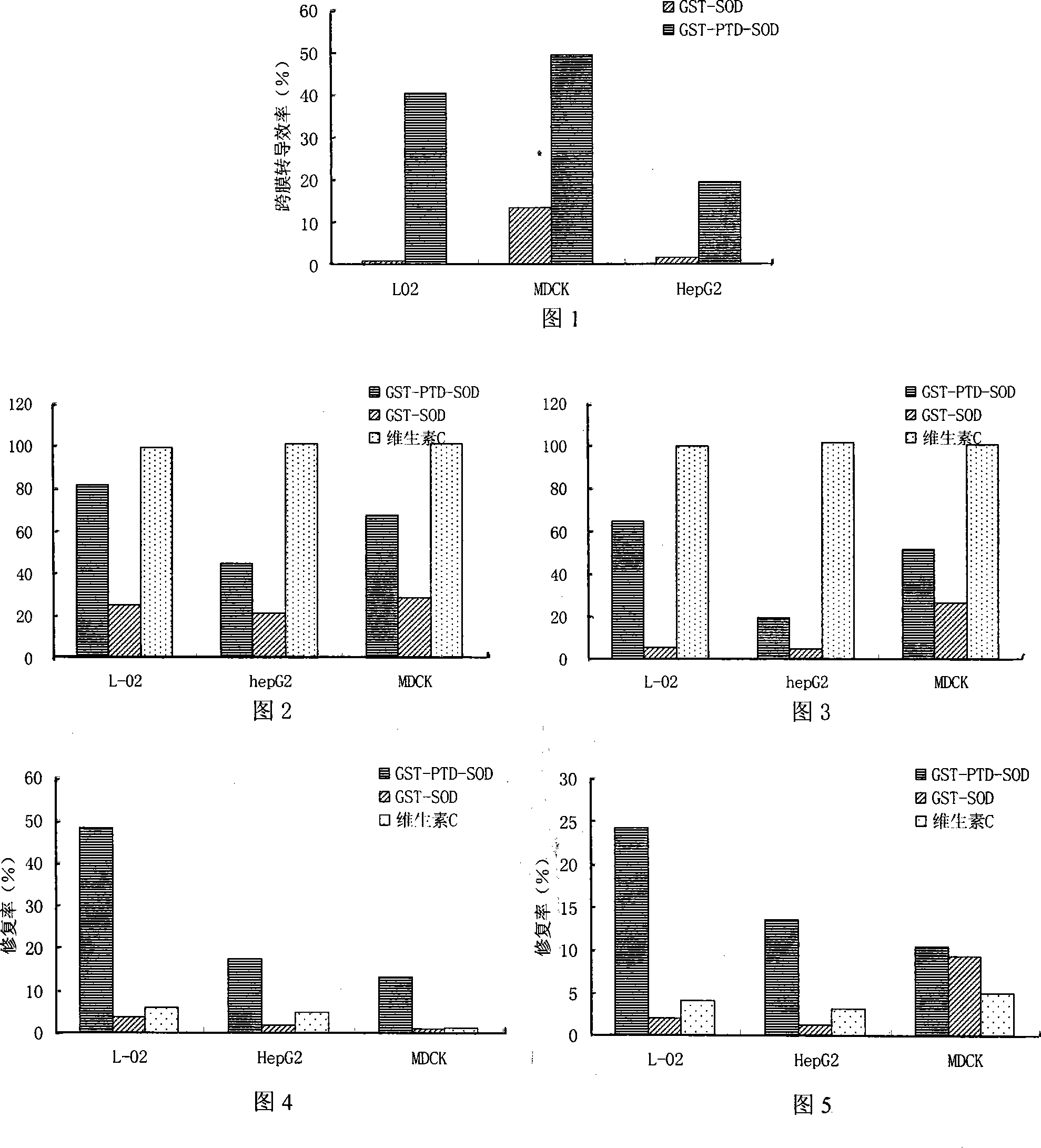Application of fusion protein GST-PTD-SOD in radioresistance
A technology of GST-PTD-SOD and fusion protein, which is applied in the field of fusion protein, can solve problems such as inability to effectively eliminate cell damage, achieve the effects of repairing radiation-damaged cells, protecting cells from radiation damage, and increasing differentiation
- Summary
- Abstract
- Description
- Claims
- Application Information
AI Technical Summary
Problems solved by technology
Method used
Image
Examples
Embodiment 1
[0015] Example 1: Cloning hCu from human hepatocytes by RT-PCR, Zn SOD cDNA, then using primer 1 containing the coding gene of TAT-PTD at the 5' end and a primer complementary to the 3' end of hCu, Zn SOD cDNA 2 Do PCR amplification to obtain hCu, ZnSOD and PTD fusion genes. After the amplified product was recovered by enzyme digestion and electrophoresis, it was inserted into the multiple cloning site of the plasmid pGEX 2T, the expression plasmid pGEX-PTD-SOD was constructed, transformed into Escherichia coli BL21(DE3), and positive clones were screened for identification by enzyme digestion.
PUM
 Login to View More
Login to View More Abstract
Description
Claims
Application Information
 Login to View More
Login to View More - R&D
- Intellectual Property
- Life Sciences
- Materials
- Tech Scout
- Unparalleled Data Quality
- Higher Quality Content
- 60% Fewer Hallucinations
Browse by: Latest US Patents, China's latest patents, Technical Efficacy Thesaurus, Application Domain, Technology Topic, Popular Technical Reports.
© 2025 PatSnap. All rights reserved.Legal|Privacy policy|Modern Slavery Act Transparency Statement|Sitemap|About US| Contact US: help@patsnap.com

